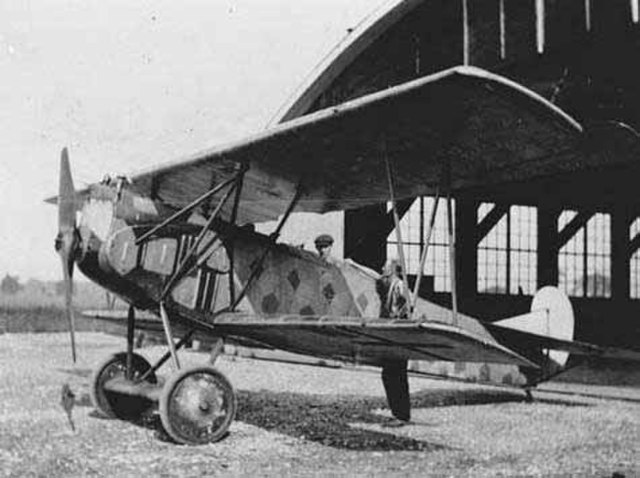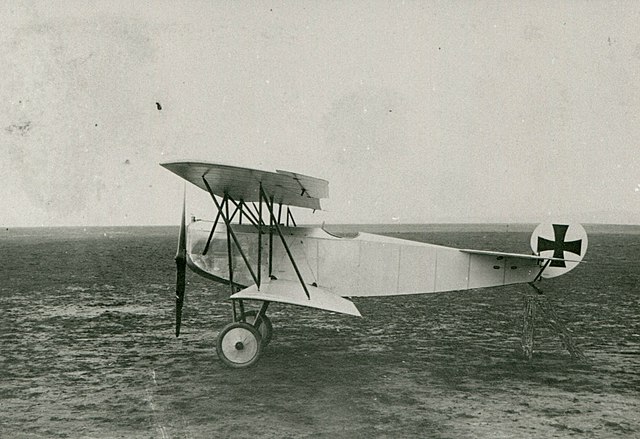The Fokker D.VII was a German World War I fighter aircraft designed by Reinhold Platz of the Fokker-Flugzeugwerke. Germany produced around 3,300 D.VII aircraft in the second half of 1918. In service with the Luftstreitkräfte, the D.VII quickly proved itself to be a formidable aircraft. The Armistice ending the war specifically required, as the fourth clause of the "Clauses Relating to the Western Front", that Germany was required to surrender all D.VIIs to the Allies. Surviving aircraft saw much service with many countries in the years after World War I.
Fokker D.VII
Fokker D.VII (OAW) 8909/18
Fokker's V.11 prototype, direct precursor to the production D.VII.
Fokker D.VII (F)
Fighter aircraft are military aircraft designed primarily for air-to-air combat. In military conflict, the role of fighter aircraft is to establish air superiority of the battlespace. Domination of the airspace above a battlefield permits bombers and attack aircraft to engage in tactical and strategic bombing of enemy targets.
An F-16 Fighting Falcon (left), P-51D Mustang (bottom), F-86 Sabre (top), and F-22 Raptor (right) fly in a formation representing four generations of American fighters.
Airco DH.2 "pusher" scout
The USAF Lockheed Martin F-35A
SPAD S.A.2, with gunner in "basket" up front








